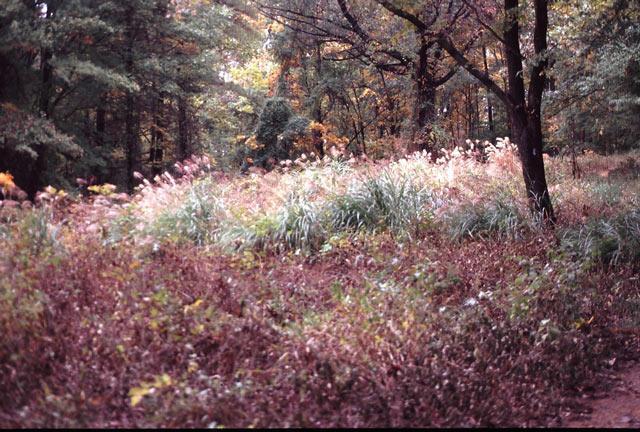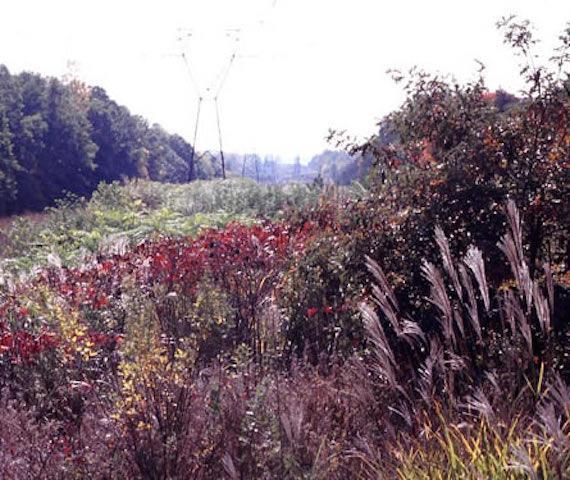
Above, a photo of Miscanthus sinensis in Rock Creek Park in the Washington, D.C. area. This area is a small (1-2 acre) meadow that was probably once a pasture, but now Miscanthus is a predominant plant on the site. Regular mowing or chemical application can control Miscanthus, but it will take several years of consistent work to eradicate it from a site such as this.

The photo above shows Piscataway Park, near Washington, D.C., Miscanthus sinensis is growing in a wooded area at the site of a former amusement park. Since Miscanthus plants prefer sunlight, they are heaviest along an old roadway in the park. The roadway is an area of human disturbance where Miscanthus was probably originally planted as an ornamental in the amusement park. The plants have self-seeded and are now one of the understory plants in this young forest. Today, the forest is dominant, and the Miscanthus will probably not spread further unless more sunlight becomes available.

The photo above shows a location Southwest of Washington, D. C. is Prince William Forest Park, near Triangle, Virginia with little or no Miscanthus growth throughout much of the park.

This photos shows a location just across the street and a large power right-of-way with several acres of Miscanthus around it. The power line is a site of human disturbance, in full sun with sandy, light, well-drained soil, an ideal site for Miscanthus to grow.